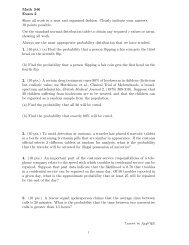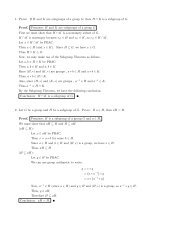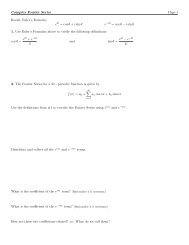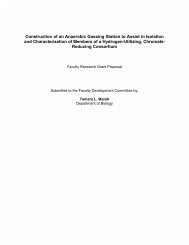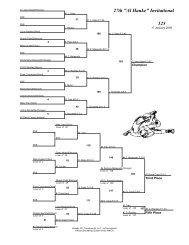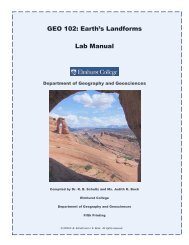Free Executive Summary - Elmhurst College
Free Executive Summary - Elmhurst College
Free Executive Summary - Elmhurst College
Create successful ePaper yourself
Turn your PDF publications into a flip-book with our unique Google optimized e-Paper software.
Learning to Think Spatially: GIS as a Support System in the K-12 Curriculum<br />
http://www.nap.edu/catalog/11019.html<br />
SPATIAL THINKING IN EVERYDAY LIFE, AT WORK, AND IN SCIENCE 91<br />
Christaller brought these three streams of scholarship—necessity, history, and statistics—to<br />
bear on the problem of settlements. On the one hand, he was a theoretician, interested in explanations<br />
drawn from the intersections of geography, history, economics, and statistics and from the<br />
generalities of space. In so doing, he described himself as an “outsider” to all of these disciplines.<br />
On the other hand, he was an empiricist, drawn to the details of maps and regional landscapes, to the<br />
particularities of places (in this case, southern Germany in the 1930s).<br />
What distinguished his particular approach was the interplay between theory and observation,<br />
driven by a remarkable capacity for spatial thinking. In his work, we can see a variety of complementary<br />
approaches: space as in graphics, space as in the description and analysis of patterns, space<br />
as in a structure for a model, and space as in algebraic relations in the form of hierarchies.<br />
The observational component drew on the formative influences of his childhood. As he reports:<br />
I continued my games with maps: I connected cities of equal size by straight lines, first of all,<br />
in order to determine if certain rules were recognizable in the railroad and road network, whether<br />
regular traffic networks existed, and, second of all, in order to measure the distances between cities<br />
of equal size. (Christaller, 1972, p. 607)<br />
Maps again become tools for experimentation, the basis of a search for regularity, pattern, and<br />
rules. In this stage, Christaller was successful, identifying latticework patterns of spatial relationships<br />
that have become iconic and, to some geographers, beautiful: “Thereby, the map became<br />
filled with triangles, often equilateral triangles (the distances of cities of equal size from each other<br />
were thus approximately equal), which then crystallized as six-sided figures (hexagons)”<br />
(Christaller, 1972, p. 607).<br />
He also identified a previously known spatial relationship whereby small towns were “. . . very<br />
frequently and very precisely 21 kilometers apart from each other.” The accepted explanation was<br />
based on a day’s travel by cart, the small towns serving as stopover points for travel between major<br />
cities. Understanding the reasons for the geometric pattern and this spacing regularity was the result<br />
of his theorizing, a step that took only nine months (see Figure 3.32).<br />
The key to this step was an imaginative leap out of the real space of southern Germany into an<br />
abstract economic model of space: “a symmetrical plain, without obstructions such as rivers or<br />
mountain ranges, with a uniformly distributed population, in order to then determine where, under<br />
such conditions, the site of a central city or market would form” (Christaller, 1972, p. 608).<br />
Copyright © National Academy of Sciences. All rights reserved.<br />
FIGURE 3.32 Diagram of a classic<br />
central place system (market areas: a K<br />
= 3 hierarchy). SOURCE: de Souza,<br />
1990, p. 258.



